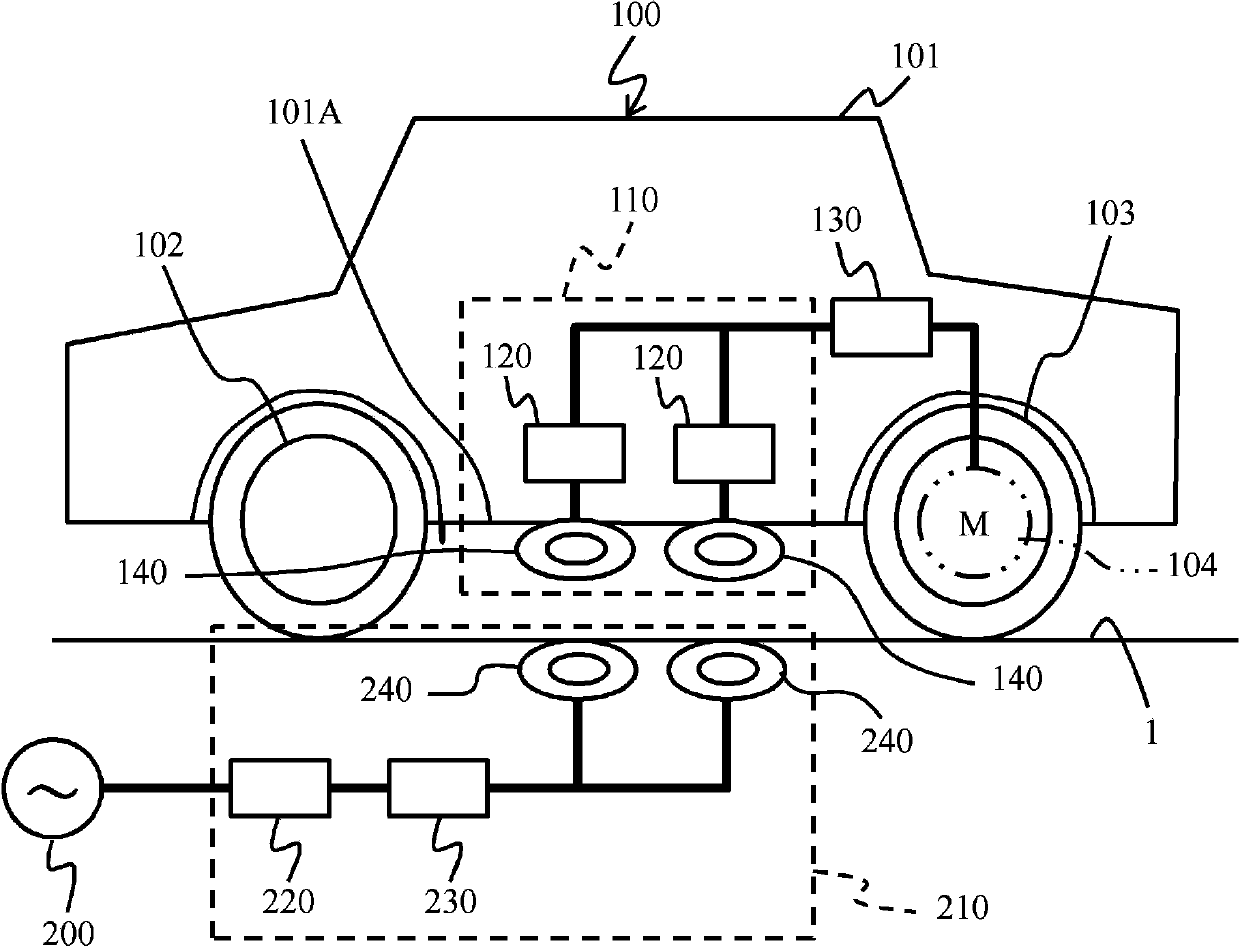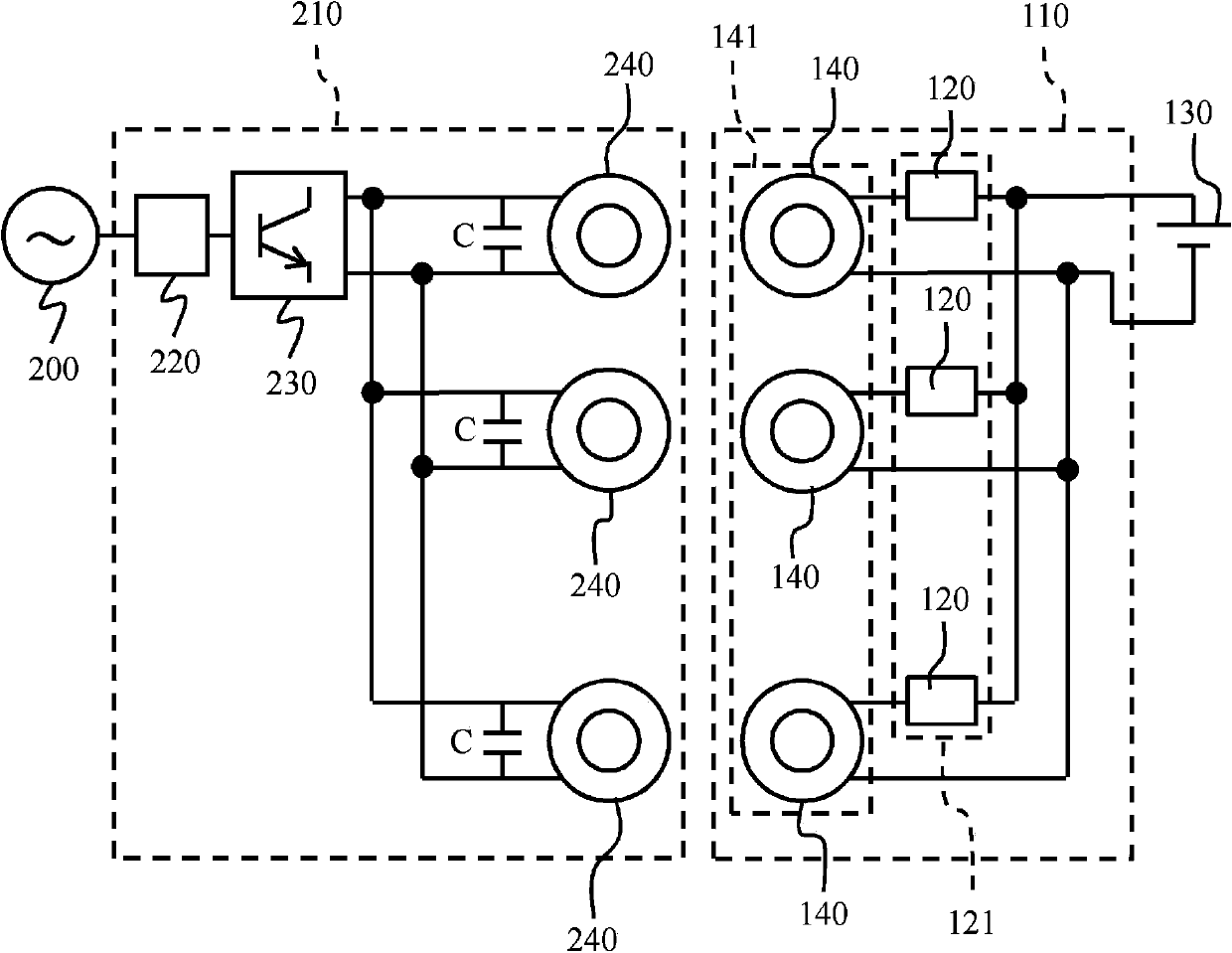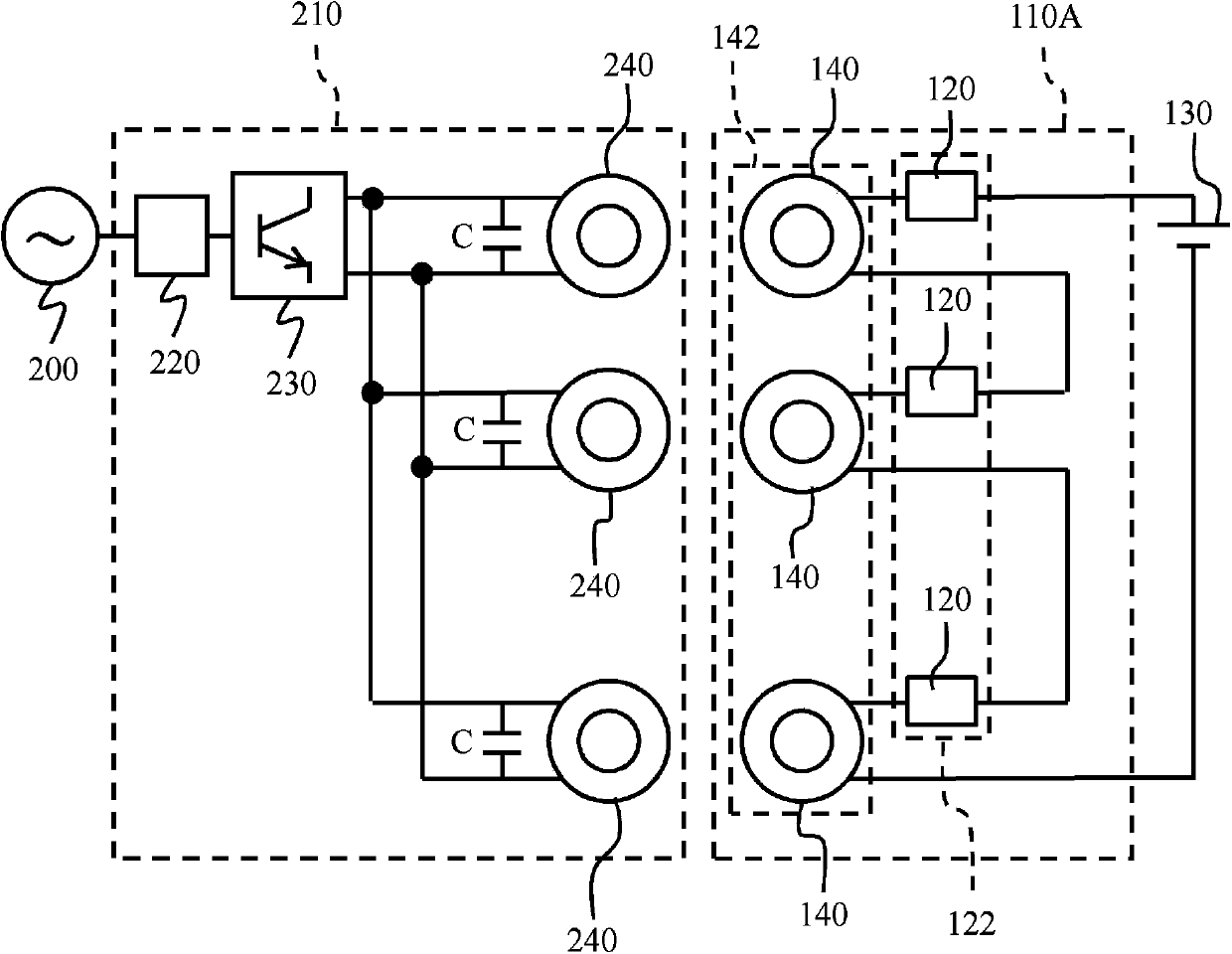Non-contact charging apparatus for mobile body and non-contact charging method for mobile body
A technology of non-contact charging and moving objects, which is applied in the direction of circuit devices, battery circuit devices, electric vehicle charging technology, etc. It can solve the problems of power receiving coils, secondary battery charging difficulties, and the inability to improve power transmission efficiency. efficiency effect
- Summary
- Abstract
- Description
- Claims
- Application Information
AI Technical Summary
Problems solved by technology
Method used
Image
Examples
Embodiment 1
[0033] use figure 1 as well as figure 2 The first embodiment will be described. figure 1 An example is shown in which an electric vehicle 100 serving as a "mobile body" is provided with a non-contact charging device for a mobile body.
[0034] The electric vehicle 100 includes, for example, a vehicle body 101 , front wheels 102 , rear wheels 103 , an electric motor 104 , a steering device, a lighting device, an air conditioner (none of which are shown in the figure), and the like. In this embodiment, the case of rear wheel drive is shown, and the electric motor 104 is provided inside the wheel of the rear wheel 103, for example.
[0035] In addition, the configuration of the electric vehicle 100 is an example, and may be a front-wheel drive system, or may be all four-wheel drive. In addition, as the moving body, an electric truck, an electric two-wheeled vehicle, an electric wheelchair, an electric one-person moving body (that is, a personal vehicle) and the like can be ap...
Embodiment 2
[0048] use image 3 Next, the second embodiment will be described. Since each of the following examples including this example corresponds to a modified example of the first example, the description will focus on differences from the first example.
[0049] Power reception device 110A of this embodiment connects a plurality of power reception coils 140 and AC-DC conversion device 120 in series, and stores received electric power in secondary battery 130 . Reference numeral 142 is assigned to the power receiving coils connected in series, and reference numeral 122 is assigned to the AC-DC converters connected in series for description.
[0050] The present embodiment thus constituted also exhibits the same effects as those of the first embodiment. Furthermore, in this embodiment, since the power receiving coils 140 are connected in series, the charging voltage to the secondary battery 130 can be increased, and a desired voltage value can be obtained.
Embodiment 3
[0052] use Figure 4 The third embodiment will be described. In the power receiving device 110B of this embodiment, the power receiving coil group 141 and the AC-DC converting device group 121 (parallel connection group) connected in parallel, and the power receiving coil group 142 and the AC-DC converting device group 122 (series connection group) connected in series connection group) are connected in parallel to charge the secondary battery 130 .
[0053] Focusing on the power transmitting device 210, only the power receiving coil 140 included in the power receiving device 110B is added, and the power transmitting device 210 described in the first embodiment is different from the power transmitting device 210 described in the first embodiment except that the power transmitting coil 240 and the resonant capacitor C are also increased. have the same structure.
[0054] The present embodiment thus constituted also exhibits the same effects as those of the first embodiment. F...
PUM
 Login to View More
Login to View More Abstract
Description
Claims
Application Information
 Login to View More
Login to View More - R&D
- Intellectual Property
- Life Sciences
- Materials
- Tech Scout
- Unparalleled Data Quality
- Higher Quality Content
- 60% Fewer Hallucinations
Browse by: Latest US Patents, China's latest patents, Technical Efficacy Thesaurus, Application Domain, Technology Topic, Popular Technical Reports.
© 2025 PatSnap. All rights reserved.Legal|Privacy policy|Modern Slavery Act Transparency Statement|Sitemap|About US| Contact US: help@patsnap.com



